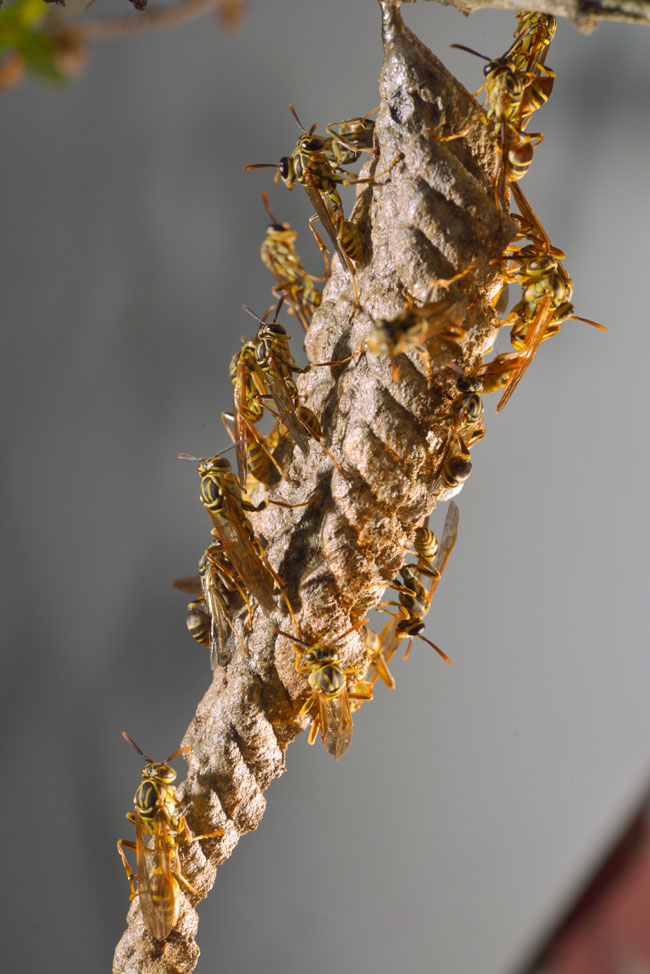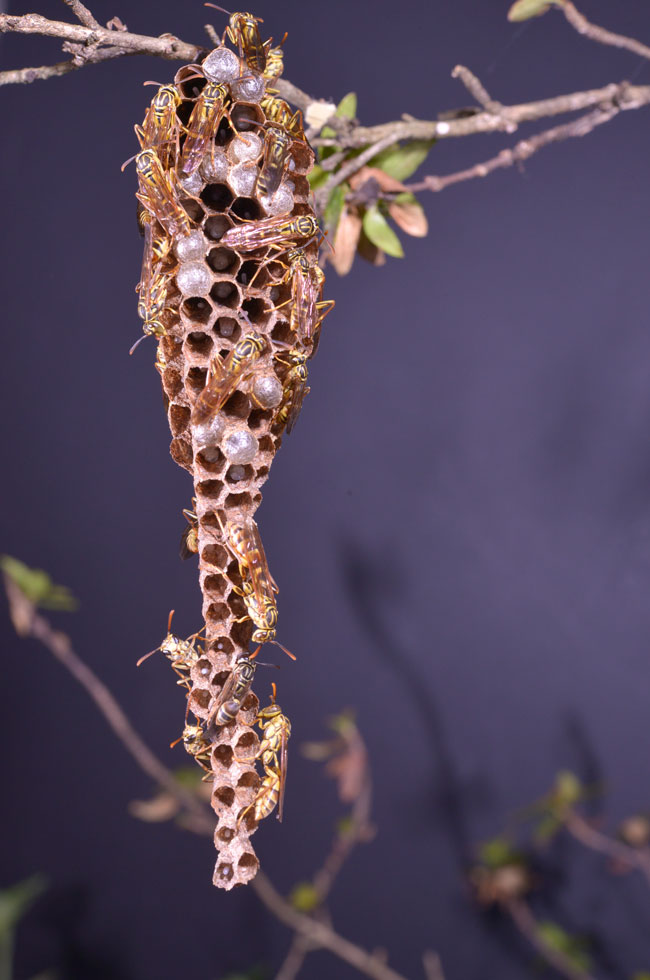Wasps will NOT (always) sting or attack unless they feel threatened
While doing research for this section on happy bees and friendly wasps the #2 return on Google was “how to kill and get rid of honey bees and wasps…”
Sorry, bees and wasps tend never to sting you if you do not try to exterminate them.
I have interacted with wasps since the 1970’s (described below) and none of the bees or wasps that live all around my property sting me. They are welcome guests (or rather, we are guests in their natural habitat).
So let’s explore how to interact with STINGING insects in a manner that they don’t sting you constantly.
Personal experience up close with wasps
As a child I avoided bees and wasps on our family farm in the Ozark Mountains of Missouri. Plus I had to avoid rattlesnakes, copperheads, and cotton-mouth water moccasins.
But when I moved to live in the seasonal rain forests of El Peten, on the shores of Lake Yaxha (as founder and director of the Proyecto Yaxha), I soon found that wasps and bees were simply part of the local inhabitants. It was not realistic to spray insecticide over the entire jungle (like commercial plantations do to wipe out everything!).
So here at Yaxha in 1970-1971, I learned to interact with wasps in a friendly way. I still have wasps all over my office and residence (in Guatemala City) today in 2015. They do not sting me ever.
|
Legal Warning: Do not imitate Dr Nicholas, since your local wasps may not be in tune with you, and may indeed sting. Plus some people are allergic to bee stings and a few stings can be fatal). |
Our dining room table at Yaxha was built with pacaya or comparable palm (less than an inch in diameter). So it was like a table made from hollow bamboo stalks (which is not native; I prefer palm).
A solitary wasp made its nest inside the end of one of the palm tubes. As project director I sat at the head of this table, so I was in the path of this wasp every time it flew in and out.
Very quickly I learned that the wasp would not sting me if I simply ate my meal and ignored its presence. He or she ignored my presence in return.
I had to carefully warn guests not to swat at any wasp while having a meal.
This was my first experience that a “nasty stinging wasp” would not sting you if you allowed them to build and maintain their nest in your dining room table!
Wasp nests in front of the door at FLAAR
The property around our six-level office building has a bee nest at the left and two meters away a wasp nest. These wasps started their nest perhaps eight months ago. It grows about one centimeter a month.

When I wish to do close-up photographs of the nest, I have to turn the nest around so I can see the back (since there is a tall wall behind it). I do this slowly and carefully and (so far) have never been stung.
One time a wasp did land on my hand, but it made no attempt to sting me; it simply wandered around on my hand and then flew away.
I would not pretend that never would any of these wasps sting me, but there are probably 40 to 50 of them on the small nest, and in eight months they have not stung anyone of the 14 employees here at FLAAR Mesoamerica.
All the employees park and get out of their cars directly adjacent to the wasp nest every day. The bee nest is nearby. Never has anyone been stung (so far).
But if someone, by mistake, opened their car door too far, and hit the wasp nest, yes, the wasps would probably try to protect themselves.
Sadly, last month the wasps abandoned their nest. We have not yet found their new nest. The old nest was present for perhaps two years.
Neotropical Wasp Galls

While driving through the El Quiche area of Guatemala we found young trees covered with insect galls. I am not specialized in Neotropical wasp galls but I estimate these are oak gall wasps.
Guatemala is definitely a good place to visit if you are a biology student (or biology professor).
These comments are wasps are to document our research
When we finally publish our animal cartoon comic books, we want to be accurate in our depiction of animals and insects. Thus we have undertaken years of studies of insects and plants of Guatemala. As soon as funding is available, we will begin to publish our Mayan animal comic books, and after these are out, we will move to animated film.
Being as good as the well done Rio and Rio 1 are our first goals. Main goal is to have plenty of education and knowledge built into our entertaining Maya Macaw series.
There are animation studios in every part of the world which have produced excellent quality animation. But we can provide a depth of experience with actual plants and animals (and the centuries of culture). Joining forces is what will produce a worldwide success. Our goal is to have a style which is unique, realistic, and entertaining as other successful series, yet is unique in style: no manga, no gothic, no graffiti style.
Iconic, since at age 19, as an archaeology student at Tikal, I was already excavating 9th century Maya graffiti.
And just as electronic games are a worldwide goal, at the same year as a Harvard junior, I was already unearthing a 9th century Maya game: patolli. I found an entire patolli board game, and after years of further study deep into Mayan archaeology, I was able to recognize the parallel universe of the patolli game board of the Maya.
So stay tuned as we enter the Maya world to bring this remarkable heritage to the modern world around us. We hope you can come to Guatemala to experience the culture, the plants, the animals. And the wasps.
I don’t need to take drugs or alcohol to escape reality: I just walk outside my office and interact with the bees and wasps who allow me into their world. I wish to share this with people who don’t have this access.
First posted mid-February 2016.
